Differential regulation of cellular functions by the C-termini of transmembrane 4 L six family proteins in 2- or 3-dimensional environment
- PMID: 28129652
- PMCID: PMC5355095
- DOI: 10.18632/oncotarget.14809
Differential regulation of cellular functions by the C-termini of transmembrane 4 L six family proteins in 2- or 3-dimensional environment
Abstract
The transmembrane 4 L six family proteins TM4SF1, TM4SF4, and TM4SF5 share 40-50% overall sequence identity, but their C-terminus identity is limited. It may be likely that the C-termini of the members are important and unique for own regulatory functions. We thus examined how the TM4SF5 C-terminus affected cellular functions differentially from other family members. Using colon cancer cells expressing wildtype (WT), C-terminus-deleted, or chimeric mutants, diverse cellular functions were explored in 2-dimensional (2D) and 3-dimensional (3D) condition. The C-termini of the proteins were relatively comparable with respect to 2D cell proliferation, although each C-terminal-deletion mutant exhibited increased proliferation relative to the WT. Using chimeric constructs, we found that the TM4SF5 C-terminus was critical for regulating the diverse metastatic functions of TM4SF5, and could positively replace the C-termini of other family members. Replacement of the TM4SF1 or TM4SF4 C-terminus with that of TM4SF5 increased spheroids growth, transwell migration, and invasive dissemination from spheroids in 3D collagen gels. TM4SF5-mediated effects required its extracellular loop 2 linked to the C-terminus via the transmembrane domain 4, with causing c-Src activation. Altogether, the C-terminus of TM4SF5 appears to mediate pro-migratory roles, depending on a structural relay from the second extracellular loop to the C-terminus.
Keywords: 3D cell culture; migration; proliferation; spheroids; transmembrane 4 L six family.
Conflict of interest statement
The authors declare no conflicts of interest.
Figures
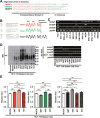
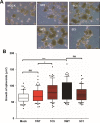
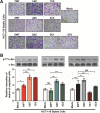
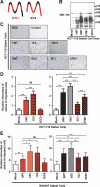
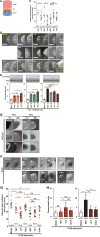

Similar articles
-
The COOH-terminus of TM4SF5 in hepatoma cell lines regulates c-Src to form invasive protrusions via EGFR Tyr845 phosphorylation.Biochim Biophys Acta. 2013 Mar;1833(3):629-42. doi: 10.1016/j.bbamcr.2012.11.026. Epub 2012 Dec 6. Biochim Biophys Acta. 2013. PMID: 23220047
-
CD133-induced TM4SF5 expression promotes sphere growth via recruitment and blocking of protein tyrosine phosphatase receptor type F (PTPRF).Cancer Lett. 2018 Dec 1;438:219-231. doi: 10.1016/j.canlet.2018.09.009. Epub 2018 Sep 11. Cancer Lett. 2018. PMID: 30217560
-
The extracellular loop 2 of TM4SF5 inhibits integrin alpha2 on hepatocytes under collagen type I environment.Carcinogenesis. 2009 Nov;30(11):1872-9. doi: 10.1093/carcin/bgp234. Epub 2009 Sep 29. Carcinogenesis. 2009. PMID: 19789264
-
Metastatic behavior analyses of tetraspanin TM4SF5-expressing spheres in three-dimensional (3D) cell culture environment.Arch Pharm Res. 2020 Nov;43(11):1162-1172. doi: 10.1007/s12272-020-01291-6. Epub 2020 Nov 21. Arch Pharm Res. 2020. PMID: 33222072 Review.
-
Transmembrane 4 L Six Family Member 5 (TM4SF5)-Mediated Epithelial-Mesenchymal Transition in Liver Diseases.Int Rev Cell Mol Biol. 2015;319:141-63. doi: 10.1016/bs.ircmb.2015.06.004. Epub 2015 Jul 20. Int Rev Cell Mol Biol. 2015. PMID: 26404468 Review.
Cited by
-
Study of the genetic association between selected 3q29 region genes and schizophrenia and autism spectrum disorder in the Japanese population.Nagoya J Med Sci. 2024 May;86(2):216-222. doi: 10.18999/nagjms.86.2.216. Nagoya J Med Sci. 2024. PMID: 38962417 Free PMC article.
-
Role of Transmembrane 4 L Six Family 1 in the Development and Progression of Cancer.Front Mol Biosci. 2020 Aug 18;7:202. doi: 10.3389/fmolb.2020.00202. eCollection 2020. Front Mol Biosci. 2020. PMID: 33015133 Free PMC article. Review.
-
TM4SF5-Mediated Roles in the Development of Fibrotic Phenotypes.Mediators Inflamm. 2017;2017:5108525. doi: 10.1155/2017/5108525. Epub 2017 Mar 26. Mediators Inflamm. 2017. PMID: 28458469 Free PMC article. Review.
References
-
- Yanez-Mo M, Barreiro O, Gordon-Alonso M, Sala-Valdes M, Sanchez-Madrid F. Tetraspanin-enriched microdomains: a functional unit in cell plasma membranes. Trends Cell Biol. 2009;19:434–446. - PubMed
-
- Charrin S, Jouannet S, Boucheix C, Rubinstein E. Tetraspanins at a glance. J Cell Sci. 2014;127(Pt 17):3641–3648. - PubMed
-
- Lee JW. Transmembrane 4 L Six Family Member 5 (TM4SF5)-Mediated Epithelial-Mesenchymal Transition in Liver Diseases. Int Rev Cell Mol Biol. 2015;319:141–163. - PubMed
MeSH terms
Substances
LinkOut - more resources
Full Text Sources
Other Literature Sources
Molecular Biology Databases
Miscellaneous

